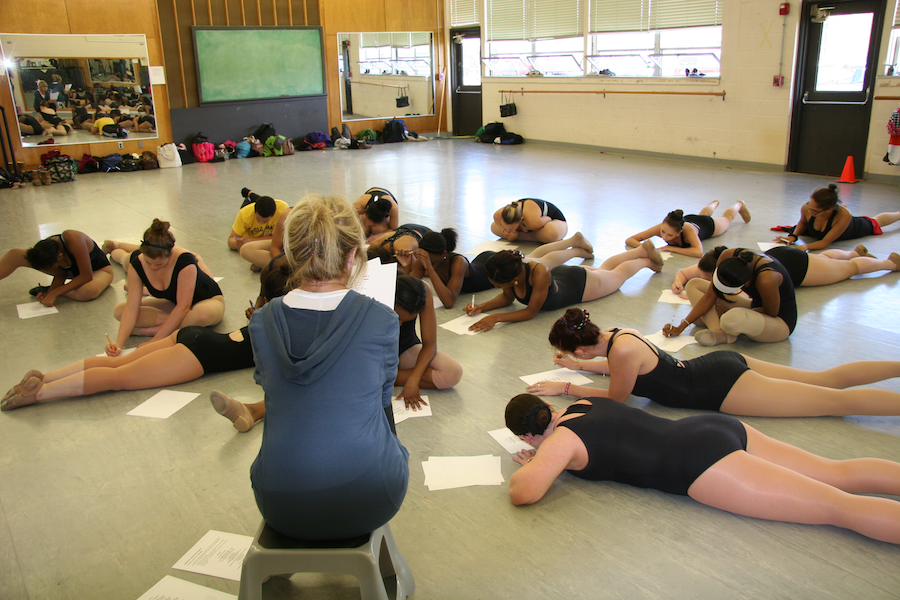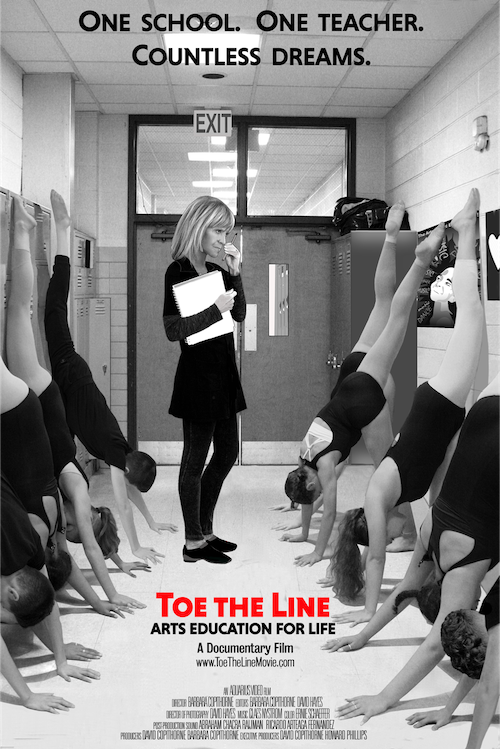Watch the video to explore the cause-and-effect links between arts education, creativity and achievement that should be possible in any American public high school. Jessica Pietrowicz is a Harvard-educated middle school teacher and a 2004 graduate of the Burncoat Dance Program. And Dr. James Garvey is the former Worcester Public Schools Superintendent who founded the Burncoat arts magnet school.
An Artist in Every School
By training the camera on one person in one school in one community, Toe the Line focuses on the pieces of the puzzle that make an arts program work. When a dedicated artist is inserted into students’ lives at an impressionable time, they can be inspired, mentored and pushed to achieve.
As an educator and role model, Joan Sheary engages her students both physically and academically, and by linking academic success to performance opportunities, motivates them to succeed in the classroom and on the stage.
But, even more important, by teaching skills that require repetitive fine-tuning, perseverance, self-discipline, and extraordinary focus, Joan is fostering not only her students’ self-esteem, but also their cognitive skills. By helping them develop these skills, such as teamwork, problem solving, and thinking outside the box, she is preparing them for success in our innovation economy and in life.
Finally, year after year, all of Joan Sheary’s dancers—oftentimes at-risk students who would otherwise be dropouts—graduate from Burncoat High School, many with honors.

Creative Skills for an Information-Based Economy
Toe the Line seeks answers to questions that have dogged educational reformers: How can we keep students in school and engaged in learning? What kinds of programs will turn out creative students with the mental agility required to compete in an information-based economy? How can we do all this with less money and fewer resources?
Consider these facts from Americans for the Arts:
- A student involved in the arts is four times more likely to be recognized for academic achievement.
- Students with high arts participation and low socioeconomic status have a 4 percent dropout rate—five times lower than their low socioeconomic status peers.
- Students who take four years of art and music classes average almost 100 points higher on their SAT scores than students who take only one-half year or less.
- Low-income students who are highly engaged in the arts are twice as likely to graduate college as their peers with no arts education.
- 72 percent of business leaders say that creativity is the number-one skill they are seeking when hiring.
- 93 percent of Americans believe that the arts are vital to providing a well-rounded education.
- The arts are recognized as a core academic subject under the federal Elementary and Secondary Education Act, and 48 states have adopted standards for learning in the arts.
- Two-thirds of public-school teachers believe that the arts are getting crowded out of the school day.
- 97 percent of elementary schools nationwide don’t offer dance and 96 percent don’t offer theater.
- In 2008, African-American and Hispanic students had less than half of the access to arts education than their white peers.
Our film documents the impact of an effective arts program on educational outcomes. Against the backdrop of a typical small American city struggling to make ends meet, we see Joan Sheary run the underfunded dance program in a 1950s-era building with cracked mirrors, broken stage lights and warped floors. But by engaging students both physically and academically—and by linking grades to performance and dance-team opportunities—she motivates them to succeed in the classroom, on stage, and in life.
For more information on arts education and to understand ways you might help promote arts education in your community, visit the Arts Education Partnership and Americans for the Arts web sites.
